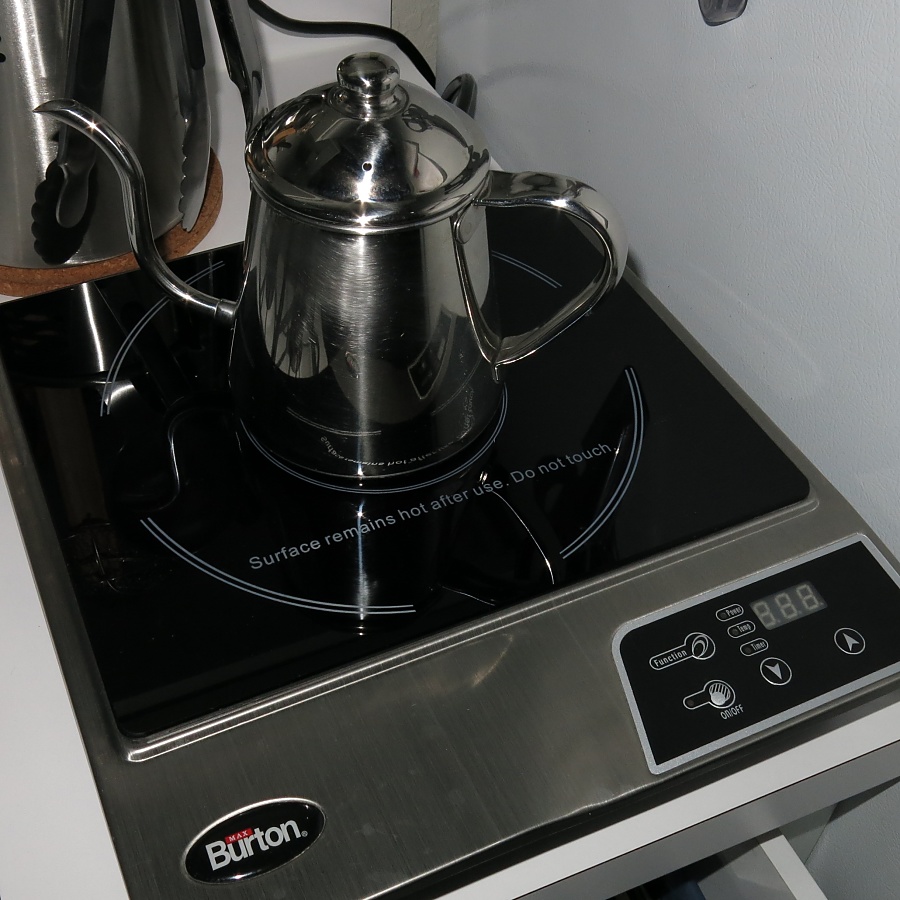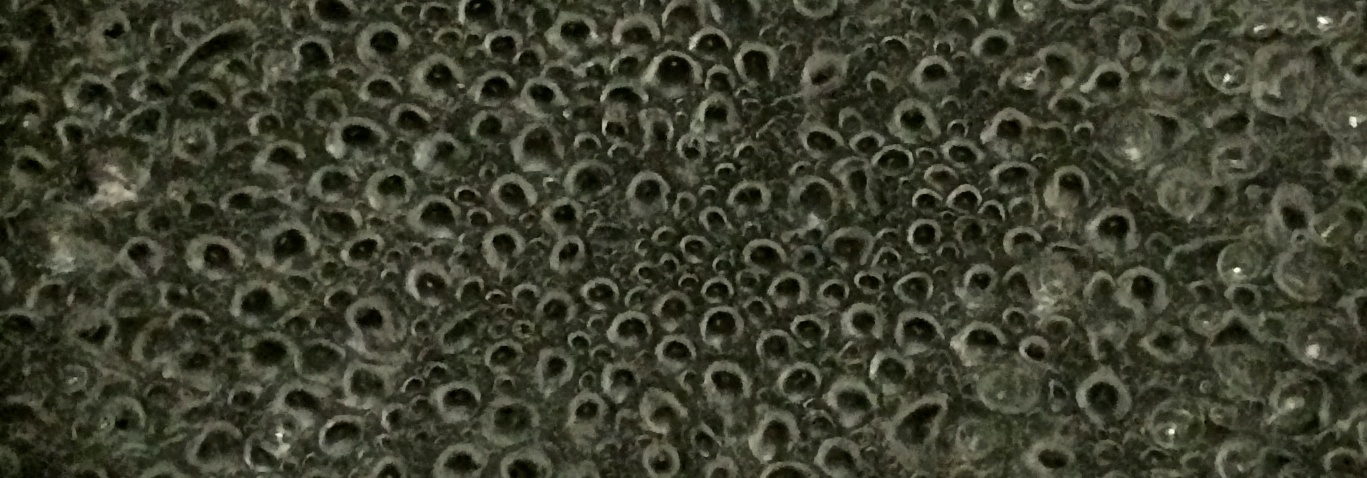Heating and boiling water is kind of a big deal. By now I would have assumed the perfect system had been developed for this task. Reality is much more disappointing.
When considering water heating methods and mechanisms, there are many important dimensions:
- Speed
- Freshness
- Accuracy & Precision
- Safety
- Convenience
- Cost
- Efficiency
- Plastic/rubber contact
Different solutions provide more or less appeal depending on sensitivity to these different dimensions. There are two places I regularly need hot water: Work and home. I’ll talk a bit about what I’ve ended up with in each environment.
At Work
At work my solution used to be a Bodum IBIS Electric Water Kettle. The version I used was smaller and less expensive than the current model. Some of the original flaws may have been corrected but I still can’t recommend it.
In short, it’s a steaming piece of junk. First off, it’s made from plastic. If concerned about contact with rubber, plastic, or other synthetic materials is a concern, the IBIS is a pretty bad offender. That said, virtually every single plug-in kettle or hot water dispenser features some amount of contact with rubber or plastic. The level varies from absurd (the IBIS) to minimal (some “stainless steel electric kettles” have only a seal between the element and kettle or in the water-level measurement system).
If hot plastic/water interaction isn’t a concern, plastic construction is still a problem. First, the exterior of the kettle gets quite warm. If touched somewhere other than the handle, it’s a pretty miserable experience. The is definitely true for metal kettles, but plastic creates a false sense of security: This is still a hot and dangerous product.
Plastic poses a bigger problem, however. Over time the thermal stress causes deformation of the lid. This allows steam to escape while pouring (burning those that hold the kettle via the handle) and impacts the efficacy of the automatic shutoff mechanism.
The kettle boils water effectively, and the desired temperature can be achieved by turning it off once the temperature is reached or waiting after boiling until the temperature drops. This turns out to be the most effective mechanism for most kettles. Kettles with temperature dials or settings for “green tea” and so forth seldom actually hit the correct temperatures. This is one of the cases where the more simple, effective, and reliable the solution, the better the result.
I’ve tried and used several other plug-in kettles and have yet to be happy with any of them. What I really want in the office is something that’s quick to boil or always ready (I sometimes don’t have a lot of time). It also needs to be spill resistant or proof, have minimal risk of steam burns, will shut off automatically, and won’t otherwise get me in trouble with facilities.
Given all the difficulties with the genre, what I really wanted at work was a FETCO Hot Water Dispenser. Unfortunately, these start around $1000 and require being plumbed in.
What I converged on instead a couple of years ago was Zojirushi Water Boiler and Warmer. These devices are relatively safe (tipping over won’t cause a fast spill; they would only be incredibly dangerous if one were to remove the lid and then pour the four liters of boiling water on somebody). They can be set to a particular temperature and held there indefinitely (mine stays at 208, but has options for 175 and 195 as well). They are energy efficient (insulated boiler is used, so maintenance energy is extremely low and heating is quite efficient). They dispense water on demand via a pump.

The device is far from perfect. It accumulates scale and has to be regularly cleaned. The plastic contact is high and the entire boiler is lined with PTFE. Sometimes the water smells “like a rice cooker.” Because the same water is kept hot for long periods of time, the water isn’t the same as being “freshly boiled,” whatever that means in practice. For the office it’s good enough, but for serious prep, not so much.
Also, it plays music when it’s finished boiling. This can be changed at bootup, but if one forgets, it can get real awkard in the middle of a meeting.
So, despite the flaws, I still think this is one of the best solutions for having hot water at the office.
At Home
There’s a bit more flexibility at home, and in particular some of the safety concerns can be relaxed. By doing so, I think a better solution can be delivered for a similar price point.
Boiling water in a tea kettle on a gas stove is the traditional approach and, strangely enough, it still works pretty damn well. The biggest problem I have with it personally is that my gas stove is criminally under-powered and that the flames combined with poor tea kettle design can cause handling the tea kettle to be somewhat dangerous. This is not a particularly efficient way to heat water, with a lot of the heat going into the air. Even with a strong stove, it can take a decent amount of time to boil water.
Still, this method hits most of the high notes. It’s easy to use an all-stainless kettle that is actually all-stainless. Control is good (stop before/after boiling to get the desired temperature).
So the big tweak here is to change methods slightly. The first step is to switch to induction. Induction is efficient and fast and leaves a (relatively) cool surface. I use a Max Burton Portable Induction Burner as a heat source. The Max Burton is horrible for cooking: Temperature control is too granular and element size is too small. For a tea kettle, these weaknesses become strengths: The kettle can be matched to the coil size and the only temperature we need is full blast. The only irritation is that the burner starts at medium (more than enough to boil) instead of full (with great haste, let’s boil).
There are vastly better induction burners and induction stove tops. For cooking, I love Cook-Tek’s products, but I don’t recommend these for beverage water boiling. The element sizes are much larger (good for big pots/pans, bad for small tea kettles) and the better control systems (e.g. 100-step or continuously-variable PWM) are a waste.

Thus, the other half of the equation is the magnificent Takahiro Kettle. I can’t find a single bad thing to say about the Takahiro except that it costs $135. The design is incredible, the ergonomics remarkable, and the pouring control impeccable. The Hario Kettle costs less than half as much, heats more slowly (seems to be related to the elevation of the kettle floor away from the induction element), and feels more awkward in the hand. Construction quality is vastly inferior. With all of that said, it’s plenty sufficient for boiling water and still works pretty darn well.

